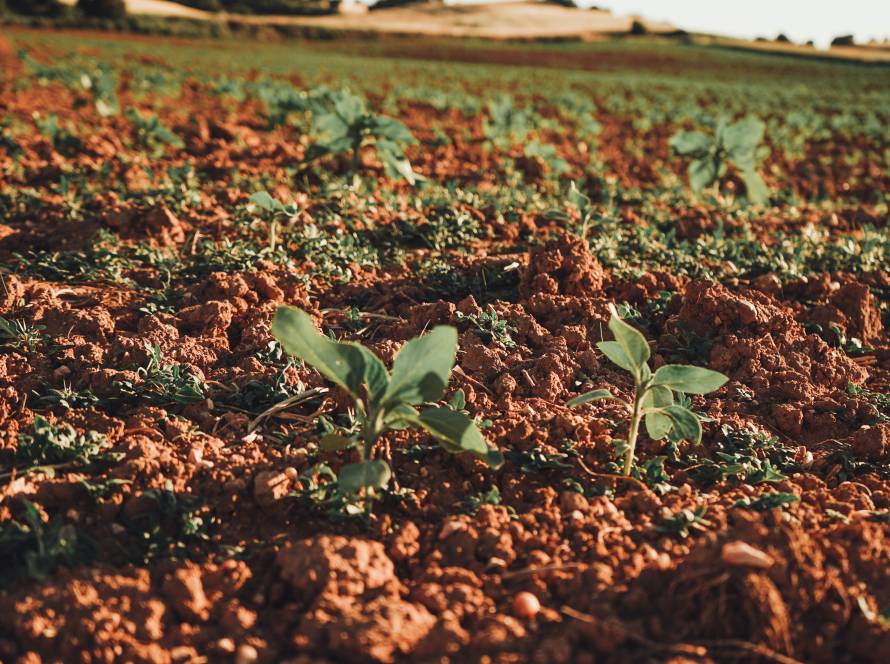Plants are one of the most important elements for healthy and efficient agricultural production. However, there are many factors that reduce productivity on farmlands and cause diseases and pests. Plant protection encompasses a set of methods used in agriculture to tackle these problems and preserve the health of crops. Harmful insects, fungal infections, weeds, and other threats can negatively impact plant growth, causing farmers to suffer significant losses. In this article, we will explore plant protection and pest control techniques in agriculture, discovering the most effective methods for sustainable farming.
What is Plant Protection?
Plant protection refers to the methods and strategies applied to protect agricultural crops from harmful organisms and prevent diseases caused by these organisms. Plant protection can be carried out using chemical, biological, mechanical, and cultural methods. Proper plant protection techniques are essential for increasing agricultural production, maintaining efficiency, and ensuring sustainable farming.
Pest Control Techniques
Controlling pests in agriculture is of great importance for both farmers and consumers. Pest control techniques ensure that crops remain healthy and economic losses are minimized. Here are the most common pest control techniques:
1.Chemical Control
Chemical control involves using chemicals such as pesticides, herbicides, and fungicides to manage harmful insects, fungi, weeds, and other pests. This method provides a rapid solution to control pests. However, excessive use of chemicals can have negative impacts on the environment, water sources, and human health. Therefore, chemical control must be applied in a controlled and conscious manner.
- Pesticides: Chemicals used to eliminate harmful insects or stop their reproduction.
- Fungicides: Chemicals used to combat fungal diseases.
- Herbicides: Chemicals used to control weeds, allowing crops to grow healthily.
While chemical control offers an effective short-term solution, it should be supported by alternative methods for long-term sustainability.
2.Biological Control
Biological control involves using predators, parasites, and pathogens—natural enemies of pests—to manage harmful organisms. This method reduces the population of pests without harming the environment, maintaining ecological balance.
- Beneficial Insects: Natural predators such as ladybugs help control pest populations by preying on harmful insects like aphids.
- Parasites: Parasites that infest and kill harmful insects play an effective role in biological control.
- Microorganisms: Fungi, bacteria, and viruses are biological agents used against harmful organisms. Fungal pathogens, in particular, are effective in reducing insect populations.
Biological control is seen as an environmentally friendly, long-term solution within sustainable farming practices.
3.Cultural Control
Cultural control is a method that aims to eliminate the living and breeding conditions of pests through various agricultural techniques. This method prevents pests from reproducing and damaging crops, thereby improving crop quality.
- Crop Rotation: Growing the same crop continuously in the same field can lead to pest proliferation. Crop rotation, or alternating the types of plants grown, helps control pest populations.
- Soil Cultivation: Proper soil cultivation disrupts pest habitats, preventing their proliferation, and also aids in healthy root development by aerating the soil.
- Hygiene: Keeping fields and farms clean eliminates the shelter and breeding grounds for pests. Regular cleaning and farm hygiene are crucial aspects of cultural control.
Cultural control is a sustainable method in agriculture that can reduce the impact of pests without the need for chemical intervention.
4.Mechanical Control
Mechanical control involves the physical removal or destruction of harmful organisms. This method includes techniques such as manually collecting pests, setting traps, or physically removing them from farmland.
- Traps: Traps are widely used in mechanical control to lure and capture harmful insects. Pheromone traps, which attract insects using their natural reproductive behaviors, are an effective method.
- Manual Collection: Manually collecting and destroying pests is a method used in small-scale farming. For instance, snails and slugs can be collected by hand and neutralized.
- Physical Barriers: Nets and other physical barriers can protect plants by preventing pests from accessing them.
Mechanical control is commonly used in small-scale and organic farming operations.
Integrated Pest Management (IPM) in Plant Protection Strategies
To achieve the most effective results in plant protection and pest control, integrated pest management (IPM) strategies are adopted. IPM involves the combined use of chemical, biological, mechanical, and cultural methods. This approach not only prevents pests from disrupting ecological balance but also maintains the sustainability of agricultural production.
- Integrated Control Methods: IPM involves identifying pests, monitoring pest populations, and selecting the most appropriate control method for the situation. This approach aims to keep pest levels under control while minimizing the use of chemicals.
- Economic Threshold: One of the fundamental principles of IPM is to resort to chemical control only when pest populations reach a level where they cause economic damage. This prevents unnecessary chemical usage.
Plant Protection and Sustainability
Sustainable agricultural practices aim to protect the environment while maintaining agricultural production. When applied correctly, plant protection techniques minimize the damage caused by pests to agricultural products while maintaining efficient production without disrupting the natural balance. Choosing biological and cultural control methods as alternatives to chemical treatments plays a crucial role in ensuring environmental sustainability.
Plant protection and pest control techniques are vital for increasing efficiency in agriculture and preventing crop losses. The integration of chemical, biological, mechanical, and cultural methods offers an effective solution for controlling pests and promoting environmentally conscious agricultural practices. For a sustainable agricultural future, integrated pest management approaches should be adopted, and environmentally friendly solutions should be prioritized.





